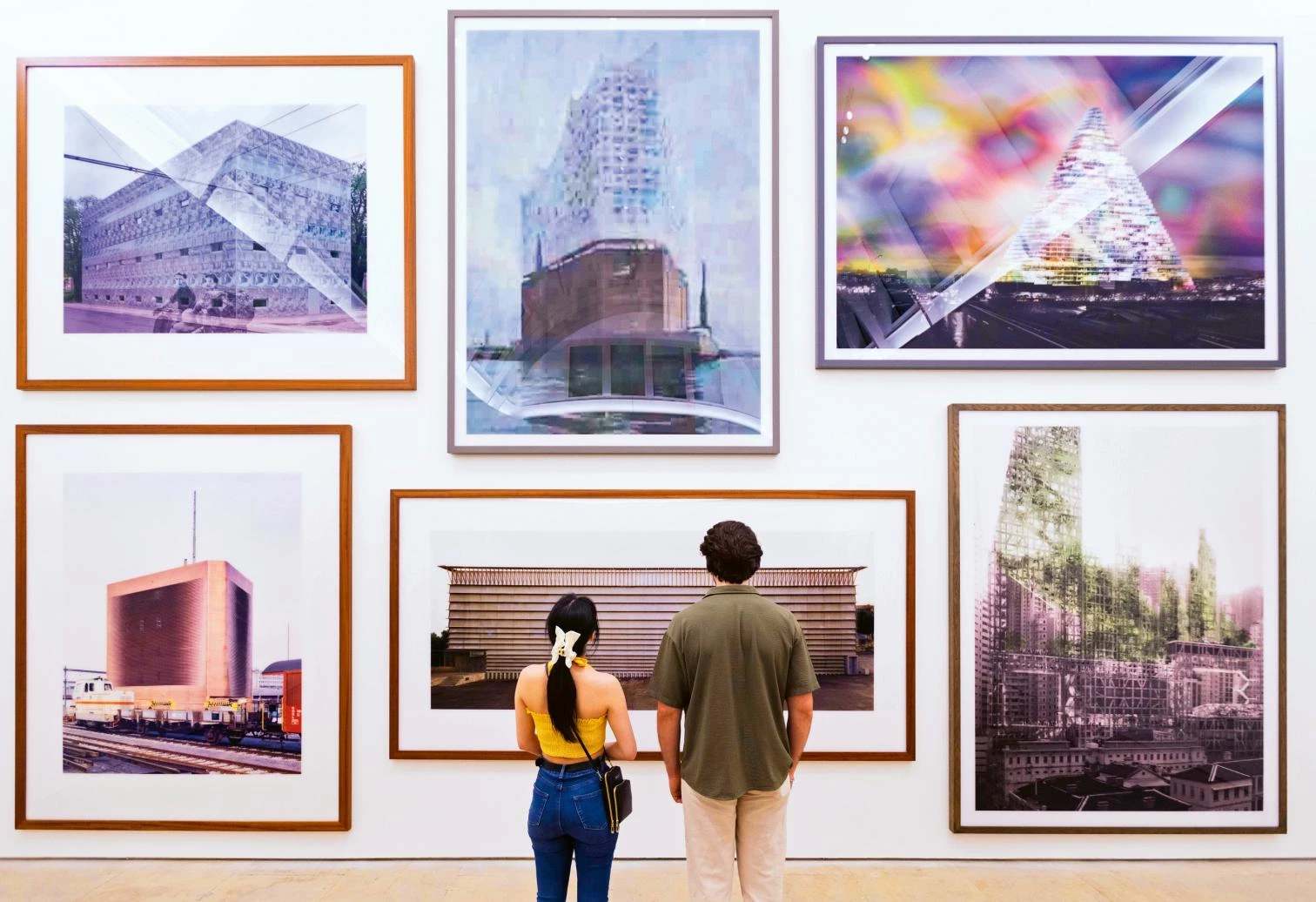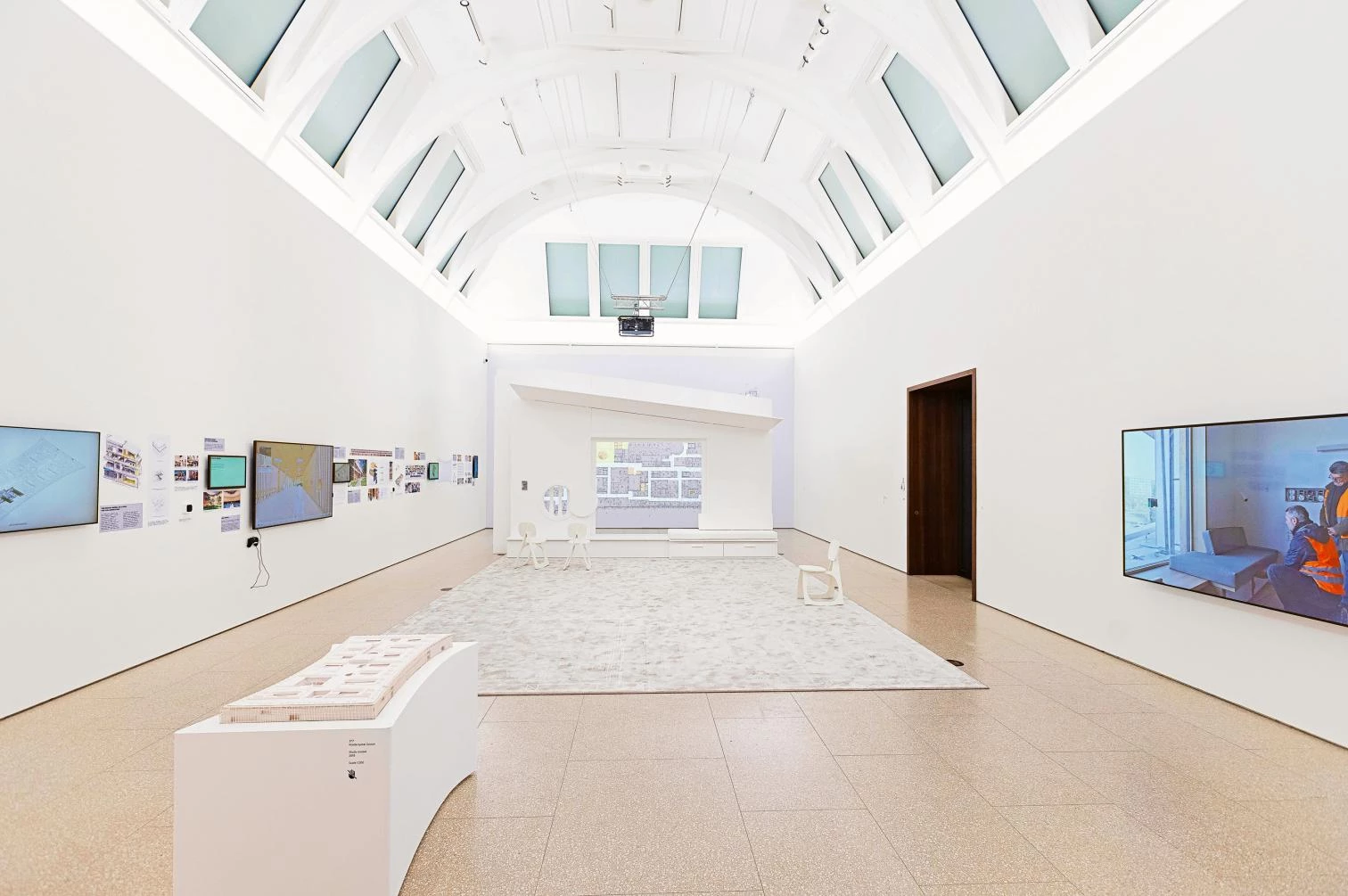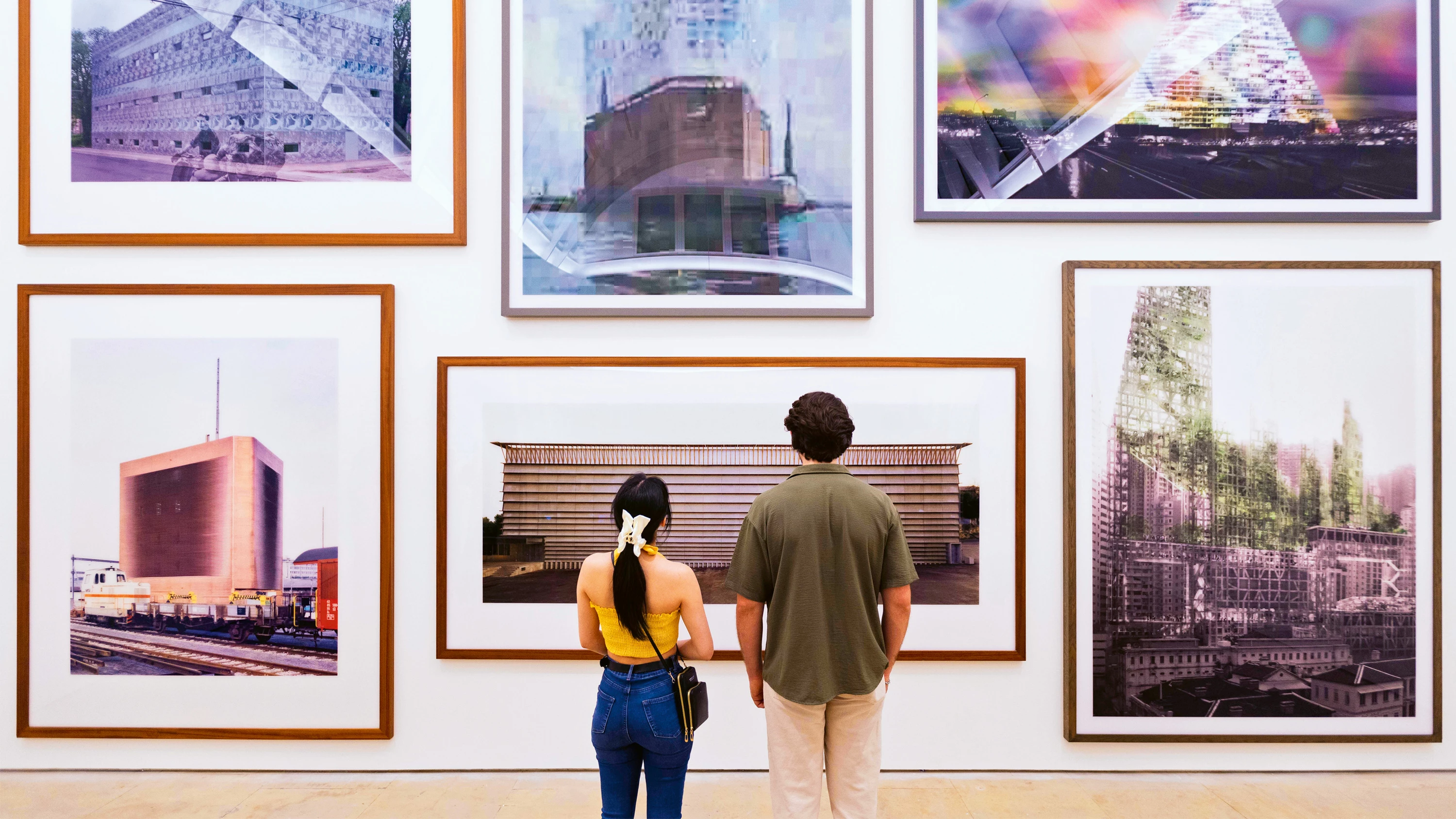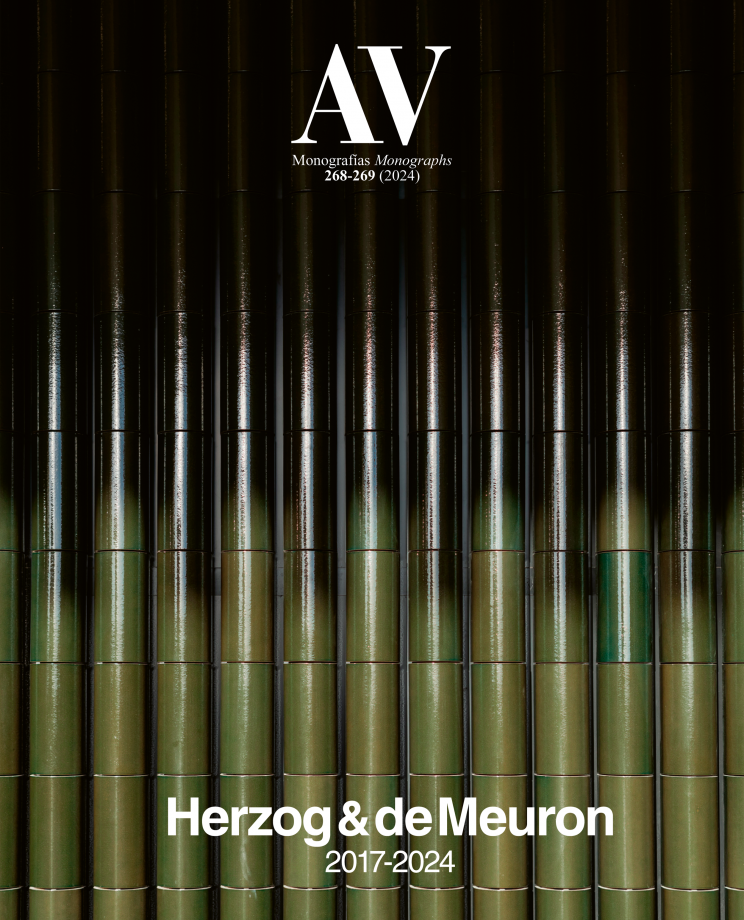
Installation view of the Herzog & de Meuron exhibition at the Royal Academy of Arts, London (14 July – 15 October 2023). Photo © Royal Academy of Arts, London / David Parry. © Thomas Ruff, DACS 2023
The Basel firm uses augmented reality in its current London exhibition, but does not really need to. Since its founding iin 1978, the studio of Jacques Herzog and Pierre de Meuron has so intensely explored the materiality of architecture, and raised buildings of such extreme tactile quality, that one is hard-pressed to picture what digital visualization can possibly add. And while much of their collaboration with photographers like Thomas Ruff or Andreas Gursky has produced memorable images, the solid gravitas of their works has inspired us to use facade textures in all four monographs and two books that we have devoted to them. At the Royal Academy, an icon next to some of the objects on display makes it possible to use an application that can be downloaded with a QR code, thereby activating different experiences of augmented reality, and some visitors do in fact use their smart phones to look through that virtual window. But the three halls can be enjoyed without digital help, because the numerous artefacts, images, and videos that make up the exhibition contain such density of information on the processes of architectural creation that visitors forget they even have their phones on them. Goethe is said to have written that “few people have the imagination for reality,” but the Swiss partners in the London show demonstrate their formidable capacity to imagine reality, augmented or not, in their effort to make each and every project a subject of unbounded research.
Arranged in three successive spaces, which without much difficulty can be associated with the Vitruvian triad, the presentation of the oeuvre of Herzog & de Meuron goes from the venustas of the first hall, with the material traces of the conception of twenty selected projects, through the utilitas of the second, with the screening of videos and the film by Ila Bêka and Louise Lemoine about patients at REHAB, to the firmitas of the third, where the Kinderspital serves to point out the architectural elements of a complex building.
The objects, models, and drawings that are left as residues or traces of the creative process are displayed on the same glass-encased shelves used in their Kabinett – the huge archive of the firm, also in Basel – and will be fascinating to all visitors, although of course those who are familiar with the work of the Swiss duo stand to gain more from examining them. The documentary by Bêka & Lemoine has the critical dimension that characterizes the filmmakers’ works, and it is gripping to see the experience of patients undergoing rehabilitation, in an exemplary clinic that already two decades ago imagined a different way of designing healthcare buildings. And the pediatric hospital in Zurich serves as an example of the attention that should be given to sick children – materialized in the real-scale reproduction of a room on plan and elevation – but also of the understanding of a large building as a small city, and especially of the complexity of projects of this nature, visible through the sequential lighting – in the mural that marks the end of the exhibition – of the different functional areas and architectural elements, from the structural grid and the circulation cores to the arrangement of facades and the interior partitions.
The inauguration was marked by the lectures that three of the authors delivered in the auditorium of the Royal Academy, tiered like an old operating theater: Pierre de Meuron – ‘Commons’ – explained the importance that proper governance of common goods held for them, illustrating it with the Brazilian scheme for Arena do Morro and the Swiss one for Sion; Christine Binswanger – ‘Care’ – spoke on the current relevance of medical centers, focusing on the two featured in the exhibition, REHAB and Kinderspital; and Jacques Herzog – ‘Curiosity’ – detailed the creative process behind the Calder Gardens in Philadelphia, an architectural lesson that was also one on artistic imagination, so exquisitely phenomenological that I almost expected him to finish the lecture with his long-awaited Highway Chapel, but this essential project was left on the shelves of the first hall and on the pages and cover of the catalog. Incidentally, the firm’s choral presentation is repeated in this publication, where the 21 selected works – only 11 of which count among the 20 on display – are commented on by up to eleven different partners, including Ascan Mergenthaler, Stefan Marbach, and Jason Frantzen, who with Christine Binswanger are the senior partners of the firm. With over 550 people in the Basel office, Herzog & de Meuron has become a global practice without giving up its local roots, and has preserved its capacity to address reality without diminishing its experimental instinct. The bird in T. S. Eliot’s Four Quartets famously said that “humankind cannot bear very much reality,” but the work of the Swiss architects is a blatant refutation of this.

Installation view of the Herzog & de Meuron exhibition at the Royal Academy of Arts, London (14 July – 15 October 2023). Photo © Royal Academy of Arts, London / David Parry. © Herzog & de Meuron

Installation view of the Herzog & de Meuron exhibition at the Royal Academy of Arts, London (14 July – 15 October 2023). Photo © Royal Academy of Arts, London / David Parry. © Herzog & de Meuron







